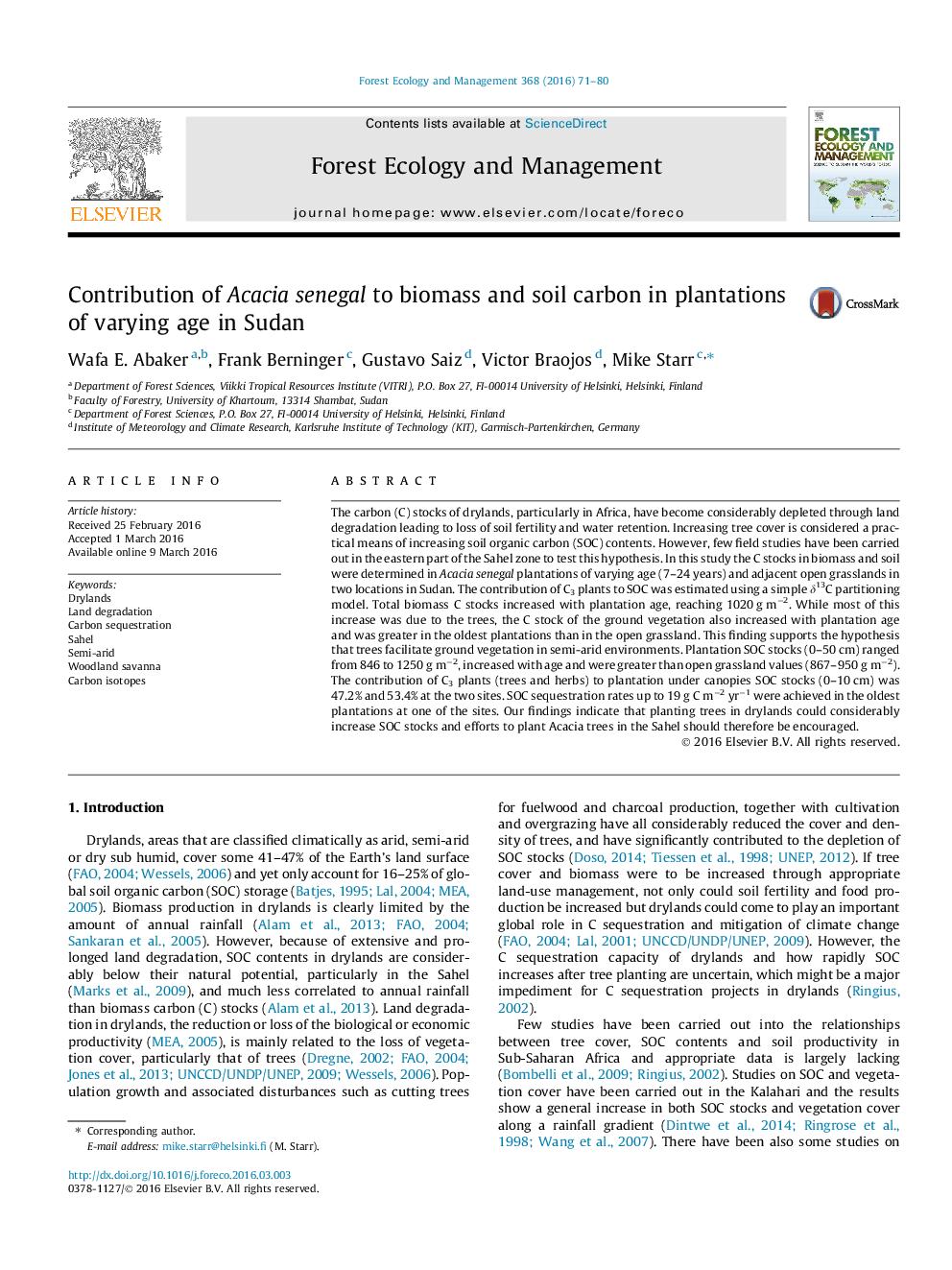| کد مقاله | کد نشریه | سال انتشار | مقاله انگلیسی | نسخه تمام متن |
|---|---|---|---|---|
| 85952 | 159153 | 2016 | 10 صفحه PDF | دانلود رایگان |
The carbon (C) stocks of drylands, particularly in Africa, have become considerably depleted through land degradation leading to loss of soil fertility and water retention. Increasing tree cover is considered a practical means of increasing soil organic carbon (SOC) contents. However, few field studies have been carried out in the eastern part of the Sahel zone to test this hypothesis. In this study the C stocks in biomass and soil were determined in Acacia senegal plantations of varying age (7–24 years) and adjacent open grasslands in two locations in Sudan. The contribution of C3 plants to SOC was estimated using a simple δ13C partitioning model. Total biomass C stocks increased with plantation age, reaching 1020 g m−2. While most of this increase was due to the trees, the C stock of the ground vegetation also increased with plantation age and was greater in the oldest plantations than in the open grassland. This finding supports the hypothesis that trees facilitate ground vegetation in semi-arid environments. Plantation SOC stocks (0–50 cm) ranged from 846 to 1250 g m−2, increased with age and were greater than open grassland values (867–950 g m−2). The contribution of C3 plants (trees and herbs) to plantation under canopies SOC stocks (0–10 cm) was 47.2% and 53.4% at the two sites. SOC sequestration rates up to 19 g C m−2 yr−1 were achieved in the oldest plantations at one of the sites. Our findings indicate that planting trees in drylands could considerably increase SOC stocks and efforts to plant Acacia trees in the Sahel should therefore be encouraged.
Journal: Forest Ecology and Management - Volume 368, 15 May 2016, Pages 71–80
